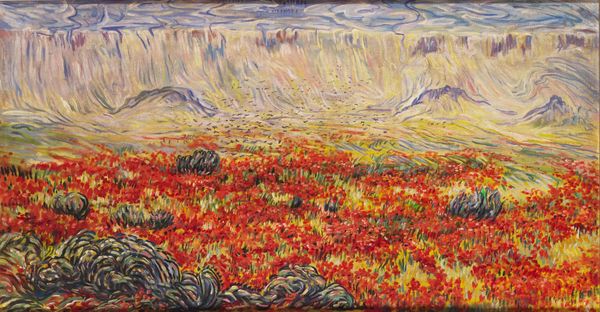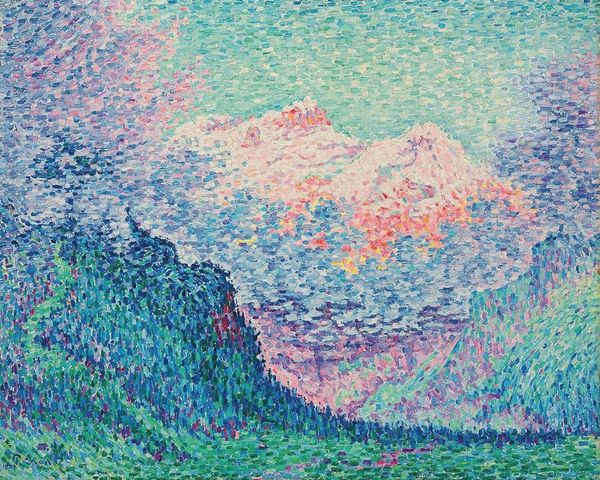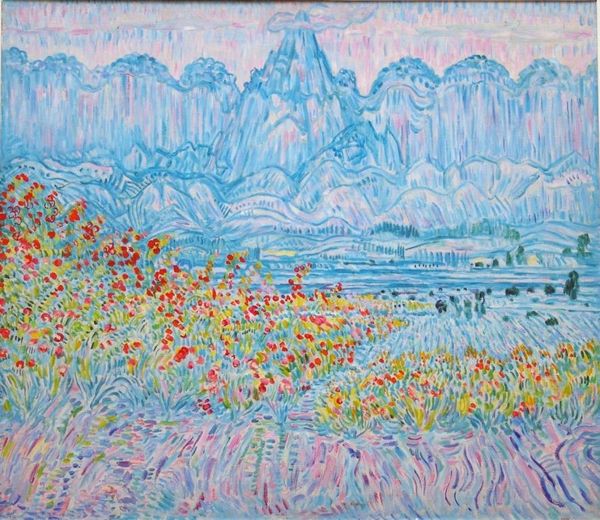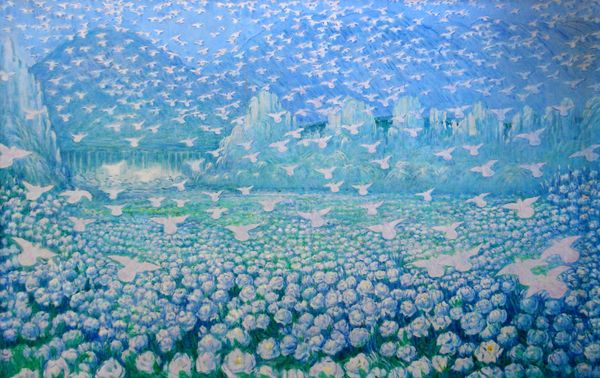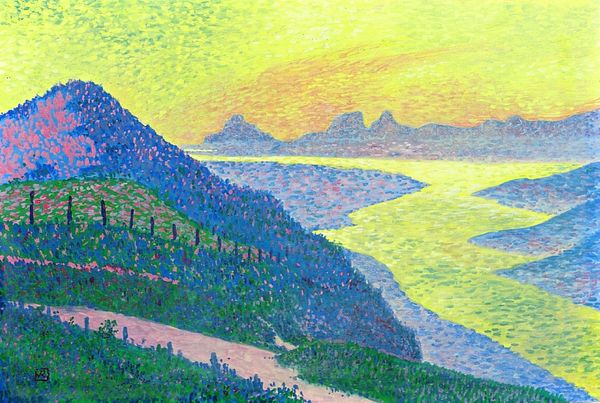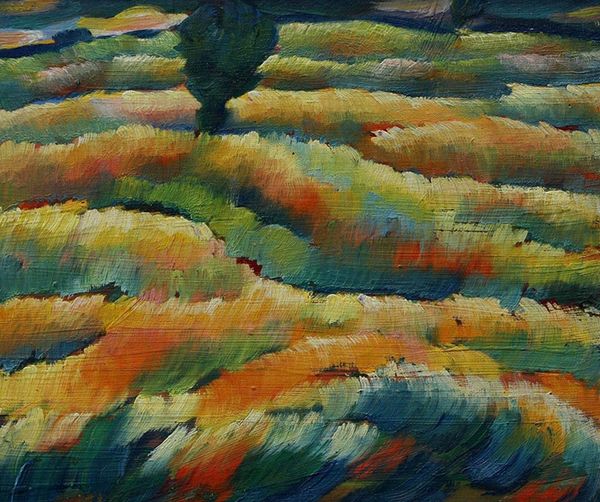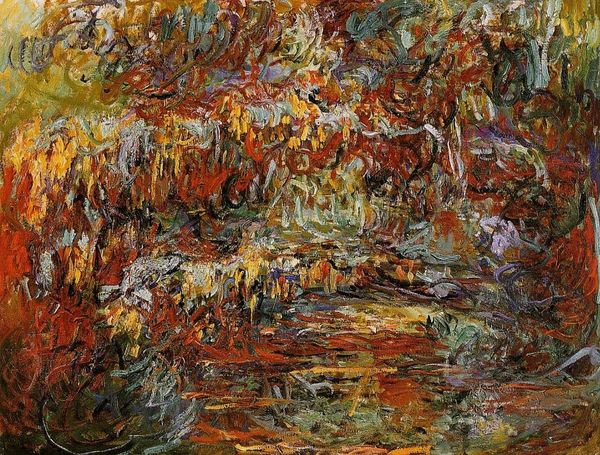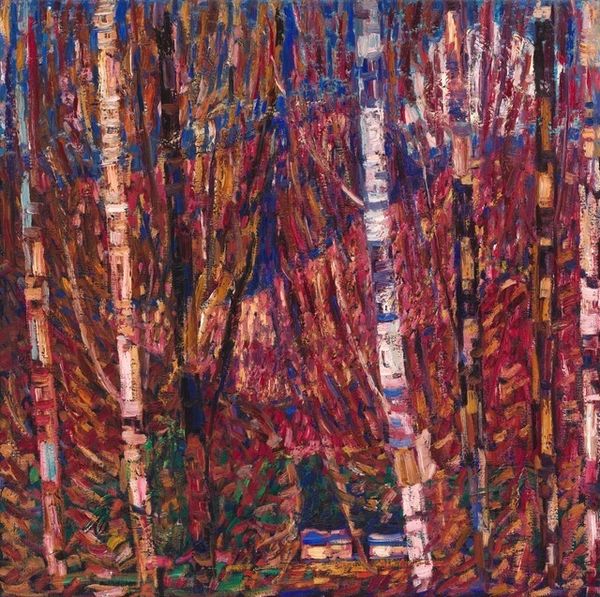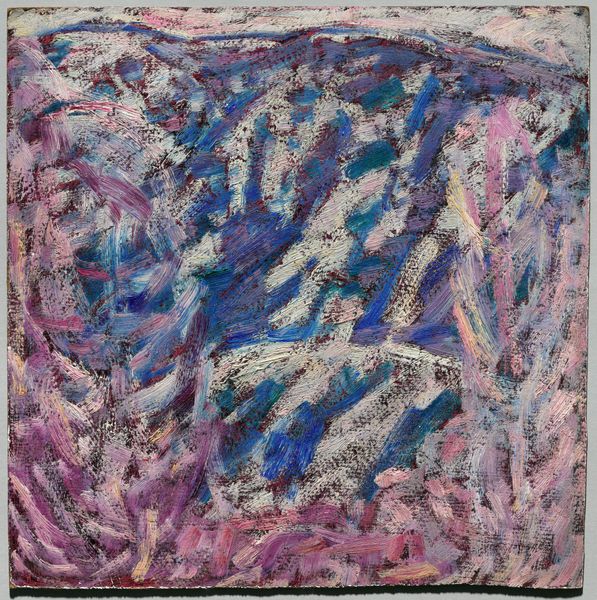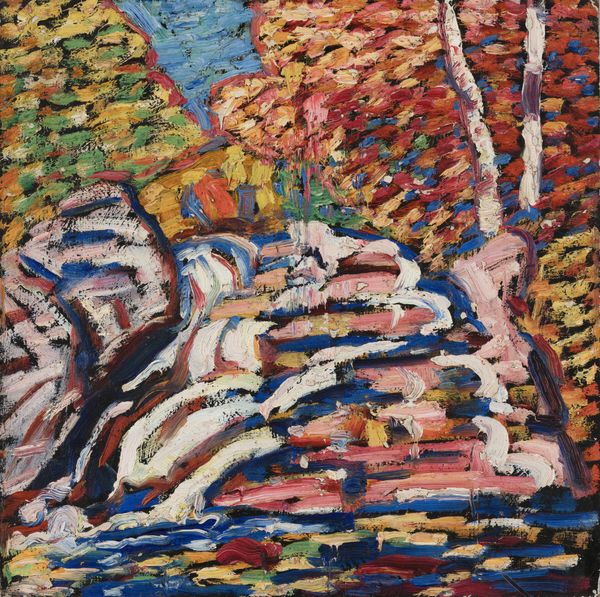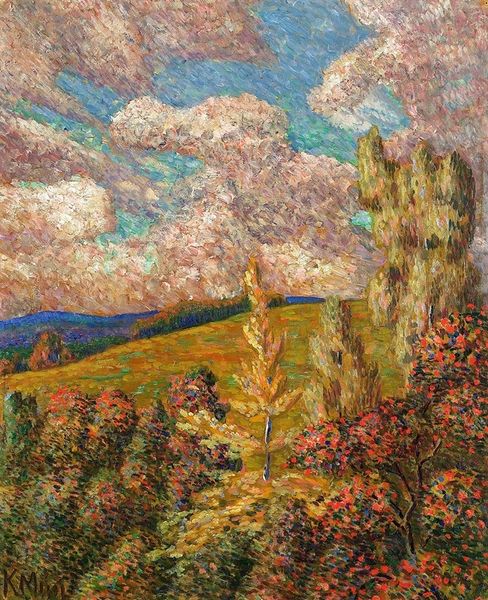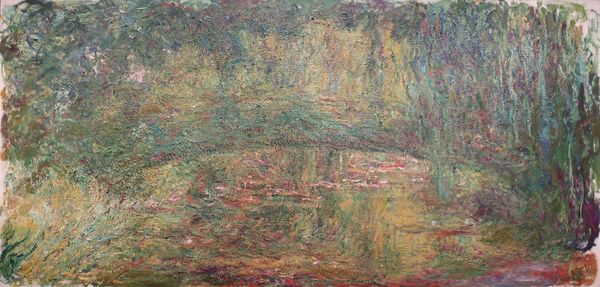
Copyright: Sattar Bahlulzade,Fair Use
Curator: This vibrant canvas is "Nakhchivan Landscape" painted in 1968 by Sattar Bahlulzade, an Azerbaijani artist. What springs to mind for you when you see this painting? Editor: It’s so intensely chromatic. Like looking at the landscape through heatwaves, a dizzying shimmer. The trees appear as if they are dissolving. Curator: Indeed! Bahlulzade was celebrated for his bold use of colour and his expressionistic approach to landscape painting, moving towards abstraction, with Fauvist and Post-Impressionist undertones. The landscape, although deconstructed, holds potent symbolism, I think. Editor: Symbolism, you say? The palette here is evocative of Fauvism but that divisionist technique, those dabs of paint, seem directly drawn from Post-Impressionist ideas, don't they? Curator: It's about how colour constructs space, emotionally and psychologically. For the artist, nature and its inherent cultural value go hand-in-hand. He builds layers upon layers of symbolic associations within these colours. For example, the red ridges evoke feelings of passion and drama but are a memory of the earth and mountains so sacred to the Azerbaijani identity. Editor: That makes sense. It's a sort of visual encoding, right? The mountains themselves, regardless of the colour on display here, always signify stability and grounding. Bahlulzade captures this landscape from his memories. It's as if he has captured an ideal or a mythic place. Curator: Absolutely, it feels like he is not merely depicting a scene but also conjuring an emotion, layering cultural memory and connection into every stroke. He creates an emotional world which is not necessarily a replica, or attempt at a realistic, mirror image of our own. Editor: The density of the impasto amplifies the dreamlike quality, doesn't it? It moves far away from just seeing. It's visceral. One can almost feel the wind rustling. Curator: Looking at this artwork then feels almost like listening to the heart beating. What we think we know transforms. Editor: A landscape reimagined, or, should I say, re-felt, then? Curator: Perhaps felt for the very first time, even.
Comments
No comments
Be the first to comment and join the conversation on the ultimate creative platform.
